Enterprise Architecture: From Business Strategy to Execution
In the face of increased competition and rapidly developing markets, companies across industries are continuously transforming. Regardless of size or impact, these transformations are often costly, long, and complex. And, even when executed successfully, their improvements are hard to sustain over time. But why is their success rate so low?
Large enterprises today have highly complex infrastructures comprised of thousands of unique yet connected business processes and IT components. This complexity makes it increasingly difficult to spot organizational silos, align changes with strategy, and foster collaboration between teams.
However, with the proper methods and execution roadmap, Enterprise Architecture (EA) can offer a blueprint for strategic transformation. It can increase alignment between the business strategy and infrastructure, strengthen stakeholder communication, and enable sustainable improvements.
In this blog post, we'll look at 5 key steps you can take to bridge strategy and execution with Enterprise Architecture.
1. Understand the drivers for change
The most successful transformation initiatives rely on evaluating the origin and impact of strategic changes. Therefore, the first question EA should ask before starting a transformation plan is, "Why"? Why is the company transforming, and how can we understand that in the larger context of our business landscape?
Companies ensure survival by maintaining a competitive advantage and consistently optimizing customer value. These efforts require them to respond to both external pressures in the market and internal opportunities for improvement. External drivers often prompt large-scale, strategic changes, while internal opportunities improve efficiency through tactical adjustments.
Examples of external drivers for change include:
- Technological developments in the market
- Growing customer demands
- Changing competitor behavior
- Shifting industry trends
Take the retail industry as an example. As technology continues to progress, consumers expect retailers to sell online while looking for seamless and personalized experiences across all digital channels. These expectations have raised the bar for sales and delivery infrastructures and demanded a higher standard for data analytics.
2. Map strategic goals
So, how are these drivers translated into strategic goals? If we imagine a retail company that wants to tap into these opportunities, it could set the following goals:
Goal 1: Increase revenue by 10% in the next two years by opening an online store.
Goal 2: Improve the digital customer experience through enhanced data analytics.
Enterprise architects can continue to model the transformation based on these goals. They can map the company's infrastructure, identify areas that require change, and assess their impact on the strategy.
However, working towards a high-level goal can be a long and initially ambiguous journey. With numerous layers of architectural elements, resources, and people, enterprise architects should carefully plan and communicate the execution.
From high-level goals to sub-goals
To simplify this process, you can divide the high-level business goals into sub-goals. This breakdown serves multiple purposes – it provides a clear roadmap with more attainable milestones, identifies key stakeholders for execution, and facilitates effective communication. Companies can visualize such a goal breakdown in an EA tool like BlueDolphin, as shown below.
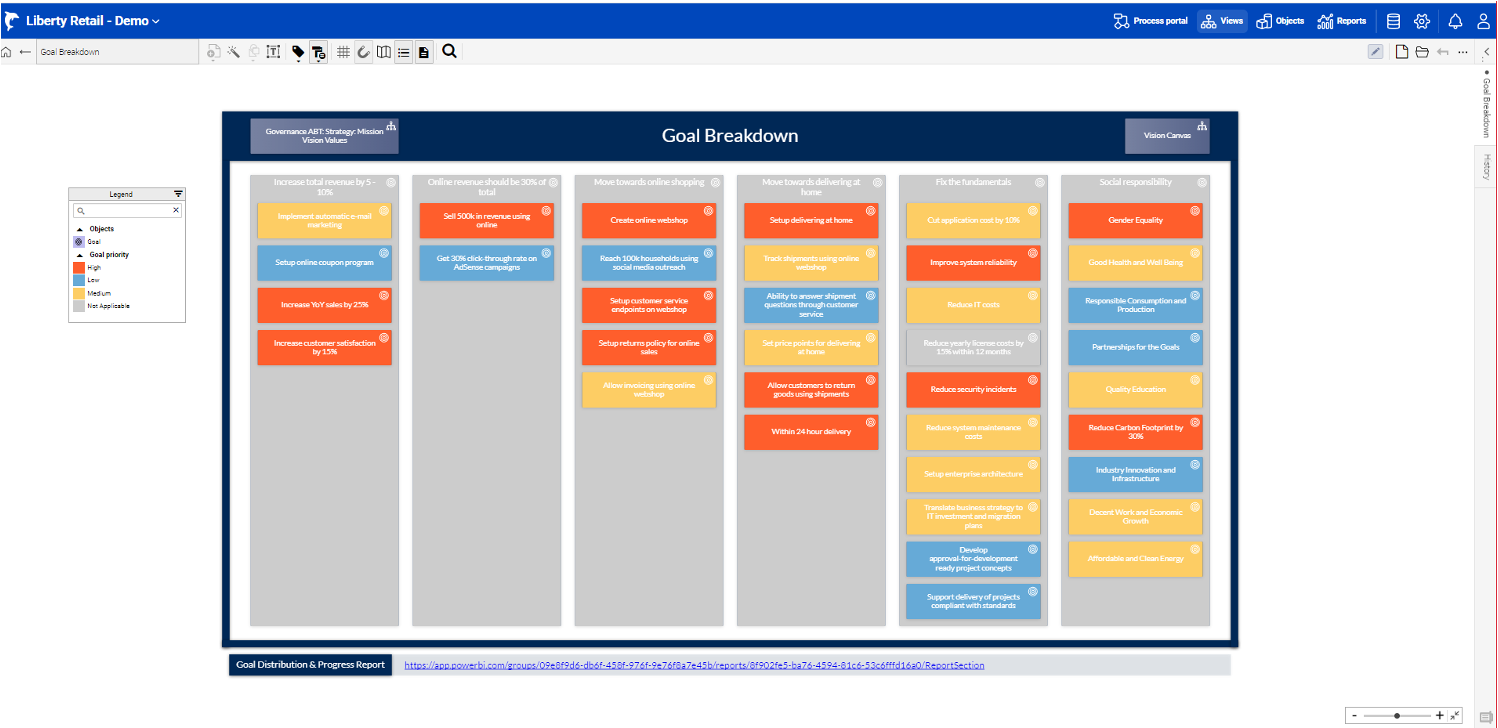 Example of Goal Breakdown in BlueDolphin
Example of Goal Breakdown in BlueDolphin
3. Connect goals to business capabilities
Once you've defined the goals (or sub-goals), you can continue to connect them to the business capabilities. In other words, you can assess what the company should – and can – do to reach these goals. Let's consider the example above to illustrate it. If a retail company opens an online store, a key capability that supports this should be transportation management.
Naturally, one capability can serve multiple goals and objectives, and vice versa. For instance, transportation management can enable home delivery while also allowing customers to return shipments.
Creating a business capability map
To fully understand which capabilities drive which business goals, it's best to create a comprehensive capability map. The map should include all business capabilities and their characteristics, including applications (with functions), processes, technology infrastructure, and data.
This step will help you understand your business model and goals, providing a complete picture of the infrastructure that supports them. As a result, you can help the company assess the impact of changes both on the architecture and its future goals.
3. Identify and prioritize ideas for change
After defining the goals and capability map, architects can plan changes from a strategic and architectural point of view. Ensuring a balance between the two is key to avoiding overly optimistic plans or over-engineered solutions that don't fit the goal.
Most of the time, the first step is to create a repository for ideas. Naturally, these ideas should relate to the external or internal drivers for change and the company's goals. Secondly, you should establish an effective way to evaluate and compare these ideas for prioritization.
Prioritizing ideas
The most effective way to prioritize ideas is through a high-level business case. This method will help break down the costs, benefits, and risks. The metrics can then serve as a baseline from which the project management board will assess the ideas and whether to move them forward.
To track proposed ideas, their status, and characteristics, organizations can record them in an Enterprise Architecture tool. In BlueDolphin, you can label them using customizable fields like ROI, risk of failure, or risk of not executing. You can then use this data to create an ideation dashboard in Power BI for a side-by-side comparison of the projects.
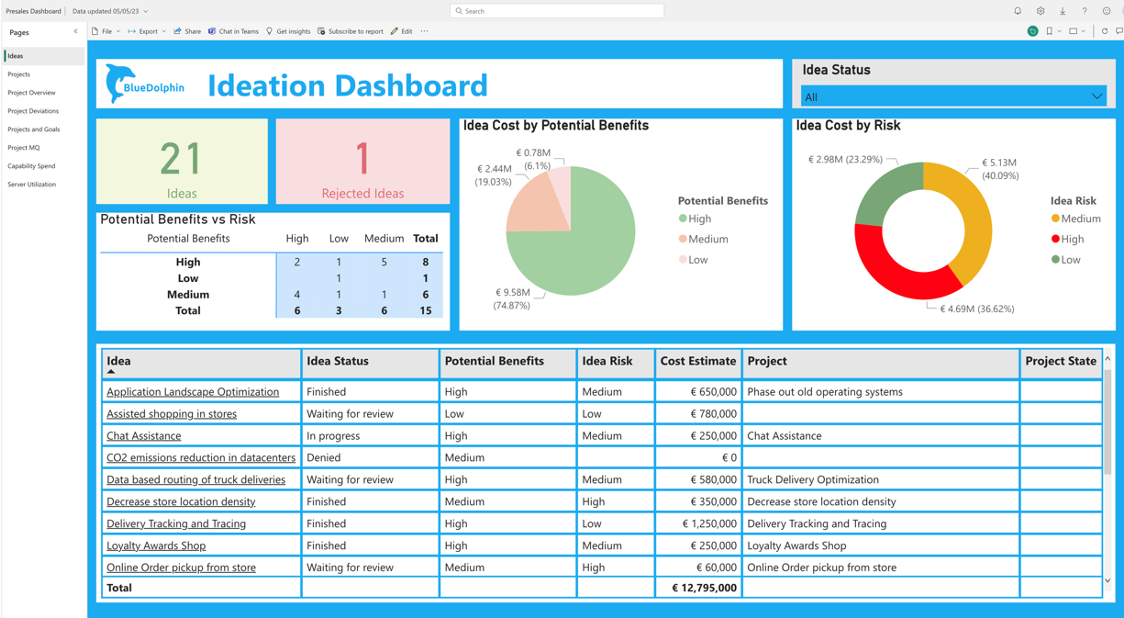
Idea Assessment Dashboard in BlueDolphin
5. Design solutions
Once you've prioritized ideas, the next step is translating them into tangible solutions. This process is known as Solution Design. Its purpose is to validate and refine possible solutions by optimizing value and defining the scope, feasibility, and implementation.
You can consider 4 main steps when going through a Solution Design cycle:
- Value refinement: Identify the needs and challenges while creating a high-level solution design.
- Requirements refinement: Agree on the solution requirements, including expected outcomes and quality standards.
- Solution architecture: Create detailed technical designs, including process and application designs.
- Solution implementation design: Break the solution into smaller, releasable parts to assess resources, time, and risks.
For a detailed dive into this process, download our eBook on BlueDolphin Solution Design.
The Result: Align Enterprise Architecture with business strategy
Transformation projects often run over time and budget or ultimately fail. This is often a result of misalignment between strategic goals and complex IT and business architectures. To bridge the gap, Enterprise Architecture teams can follow several steps:
- Understand what is driving the change
- Map the strategic goals
- Use capability-based planning to plan and assess the impact
- Identify and prioritize ideas for change
- Design solutions
Strategic alignment is not a one-time project but a long-term practice. Using these steps as guidelines, EA teams can shorten time to value, optimize resources, and, ultimately, drive successful transformations.
For more examples of strategic transformation initiatives, check out our guide on strategic planning with Enterprise Architecture below.
A Guide to Strategic Planning with Enterprise Architecture
Maximize the business value of your transformation by bridging strategy and execution with a structured approach.

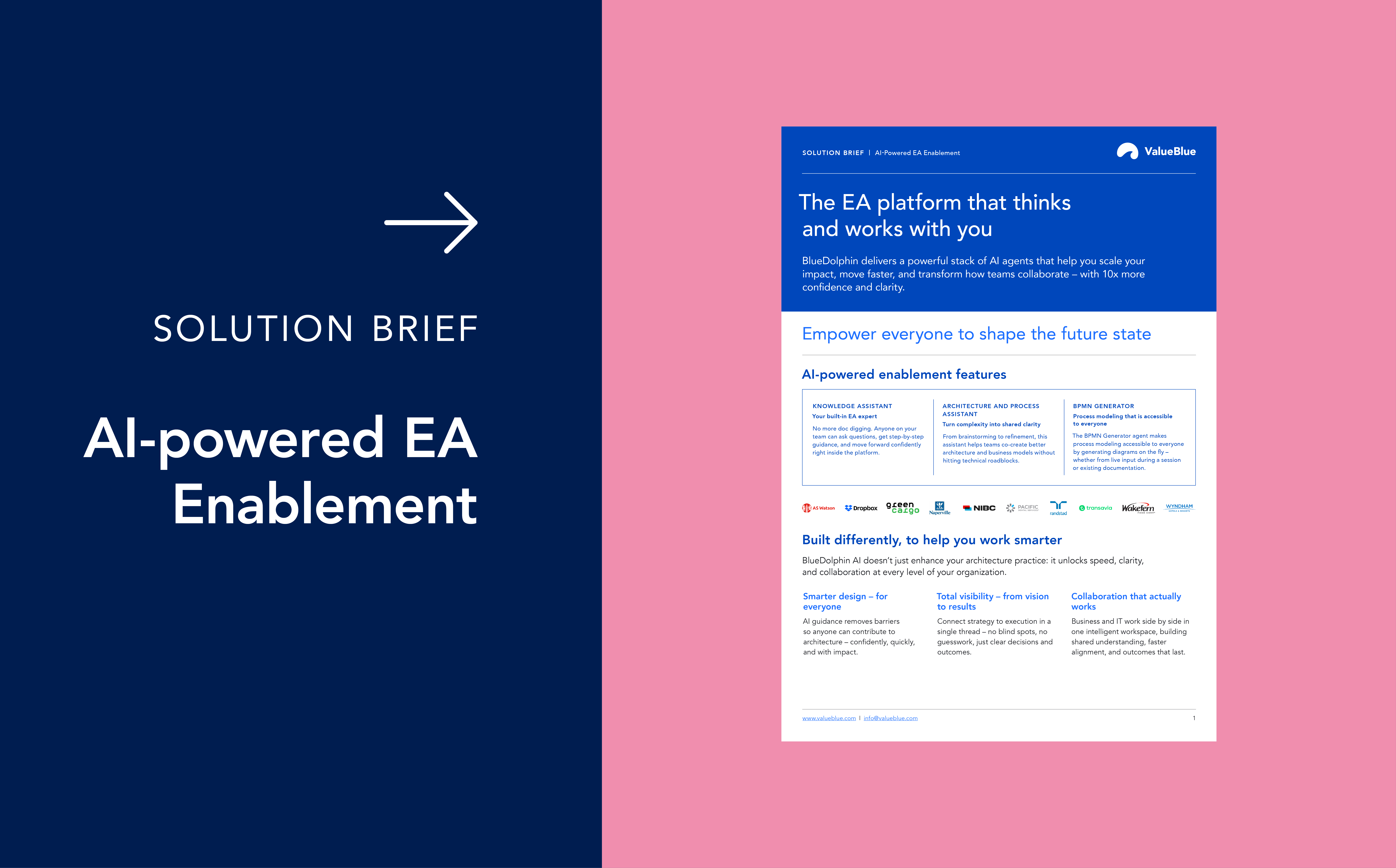
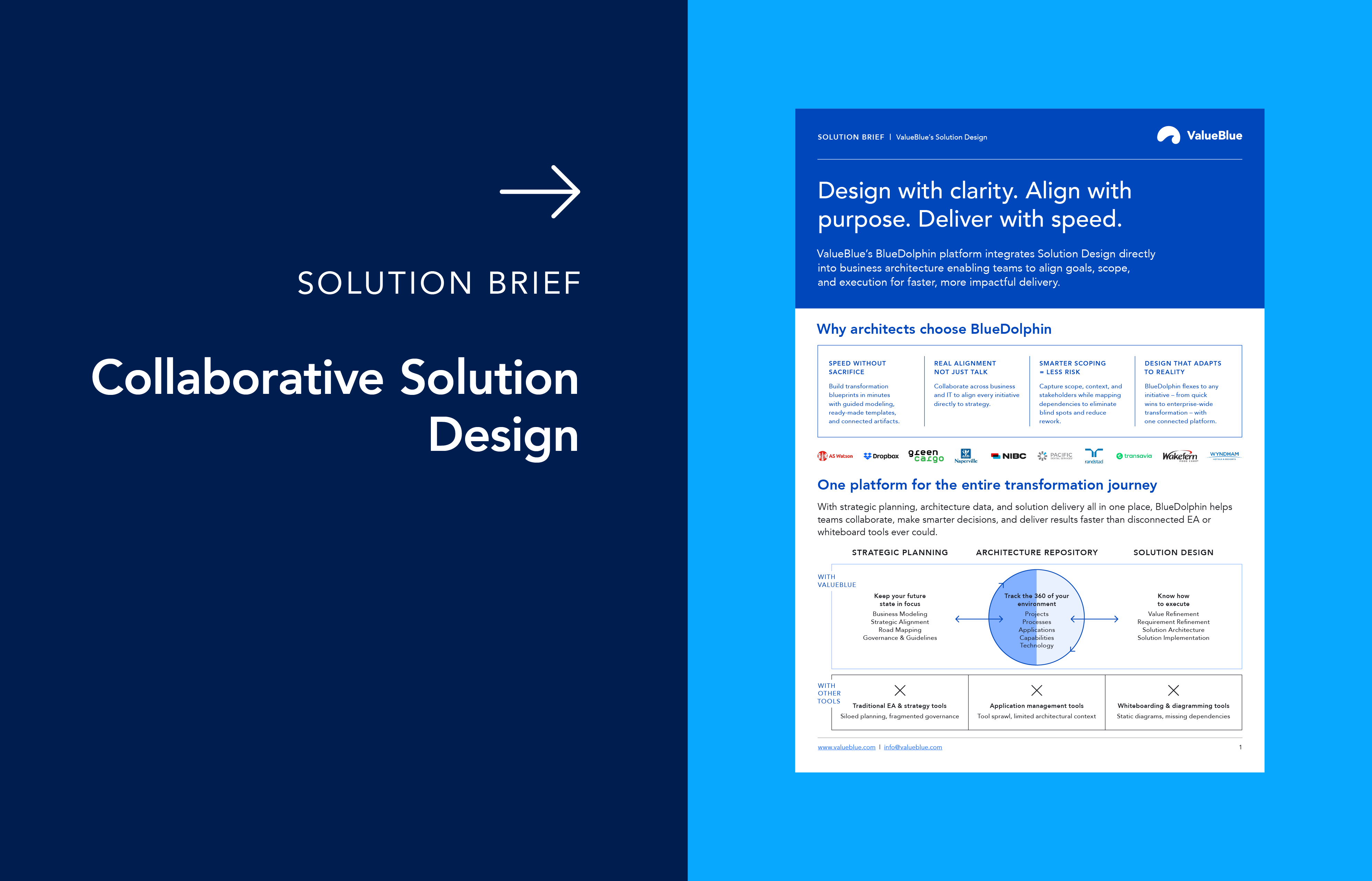
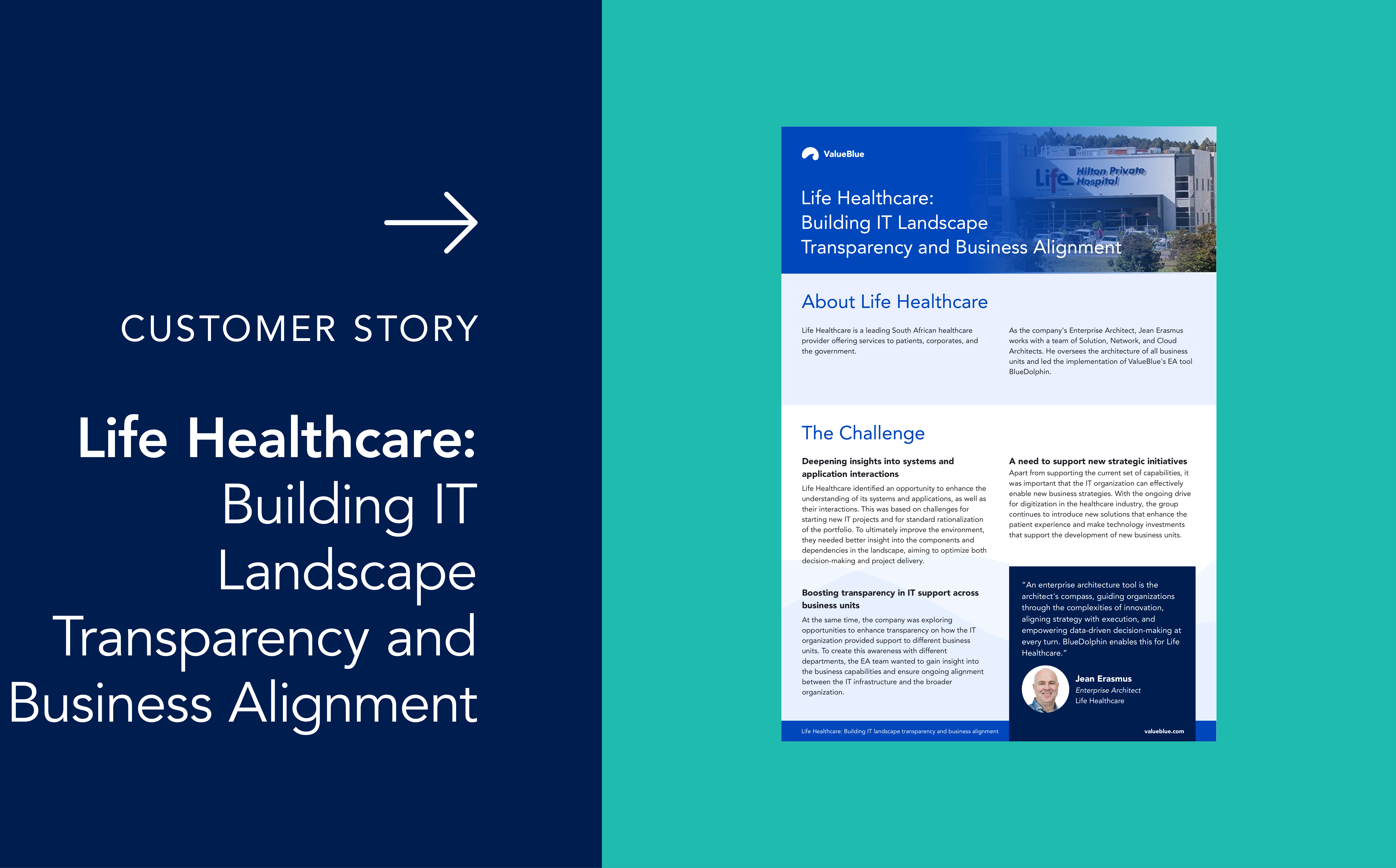
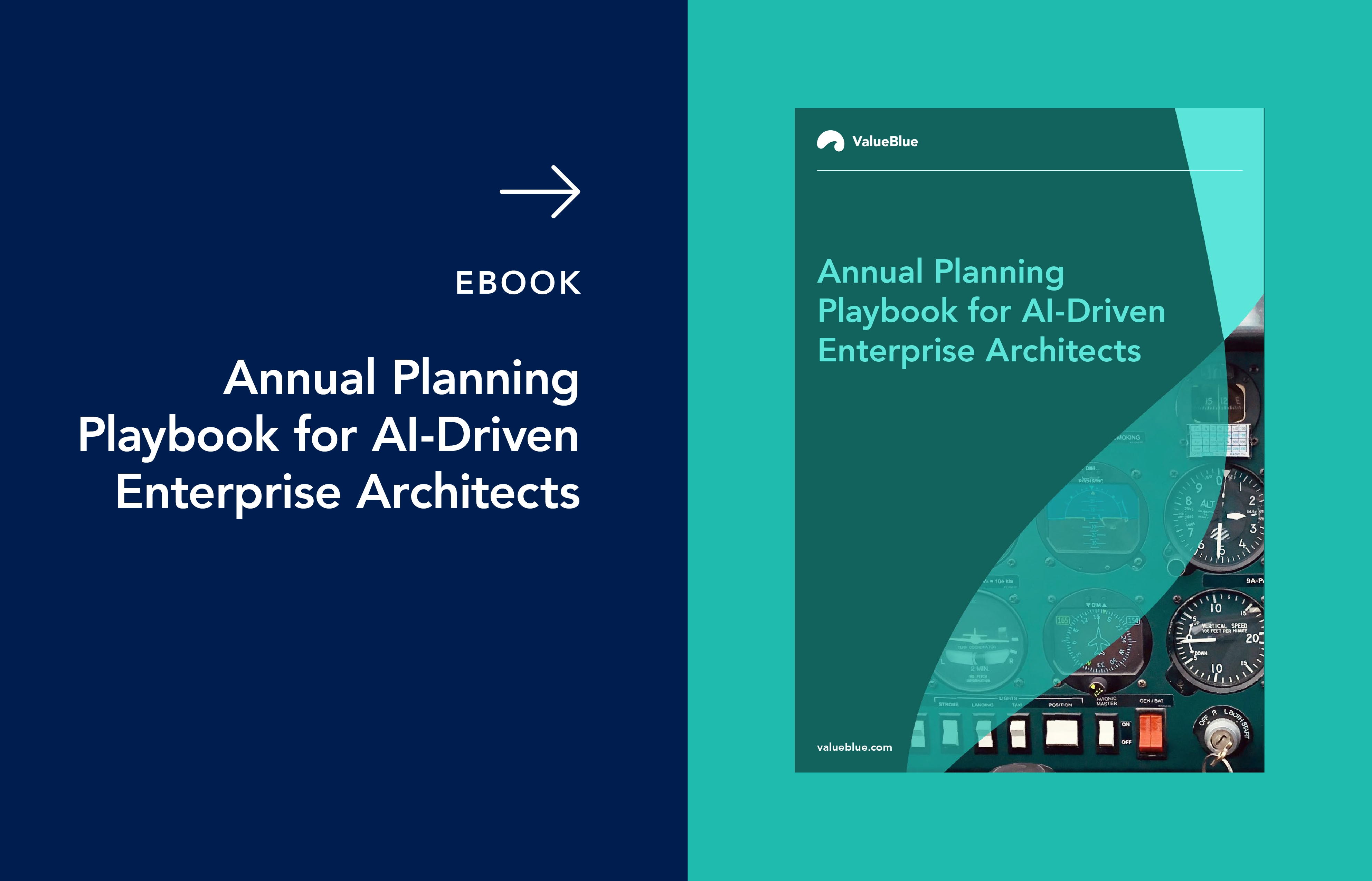

![]Guide to Strategic Planning with Enterprise Architecture](https://www.valueblue.com/hs-fs/hubfs/eBook_Guide%20to%20Strategic%20Planning_7%20pages%20(1)-1-2.png?width=161&height=228&name=eBook_Guide%20to%20Strategic%20Planning_7%20pages%20(1)-1-2.png)